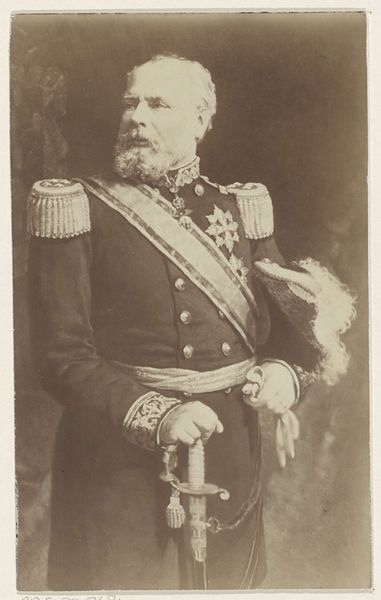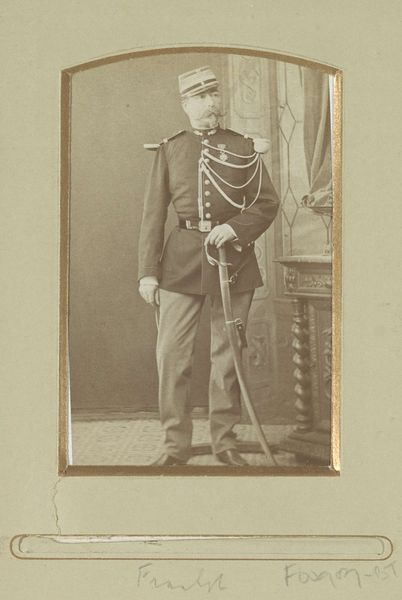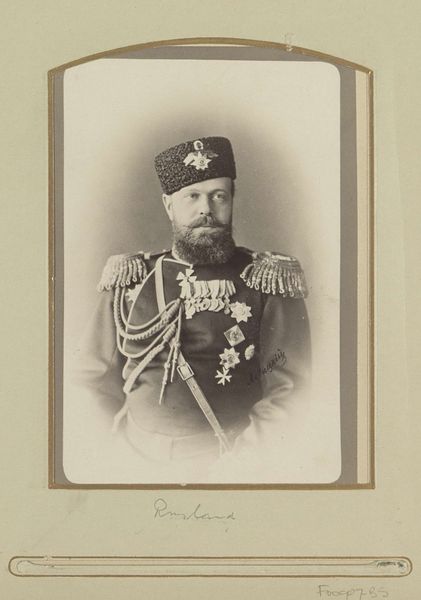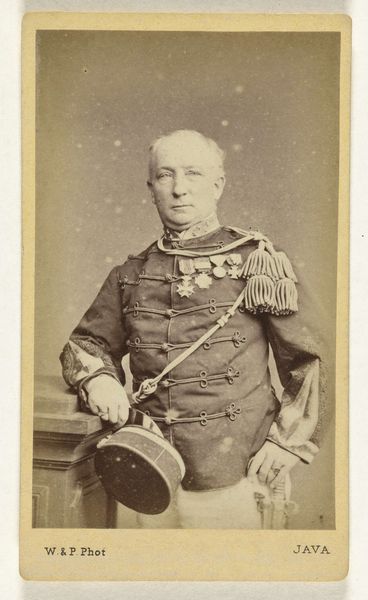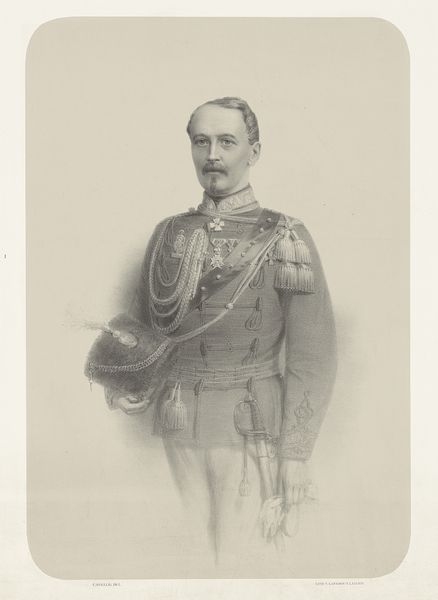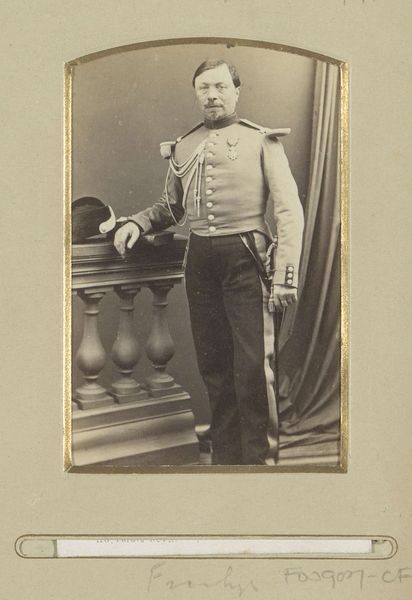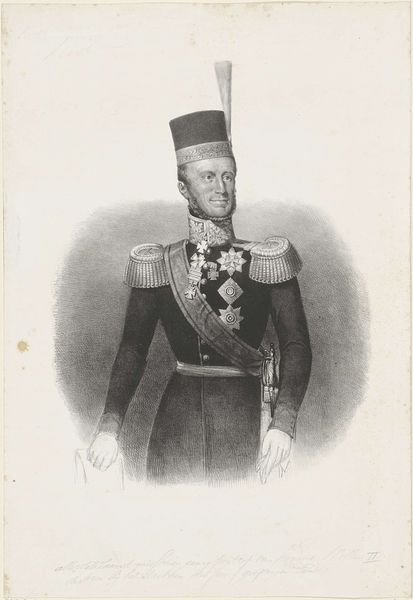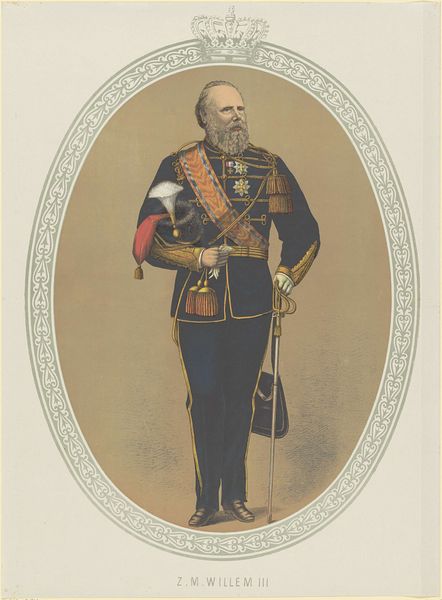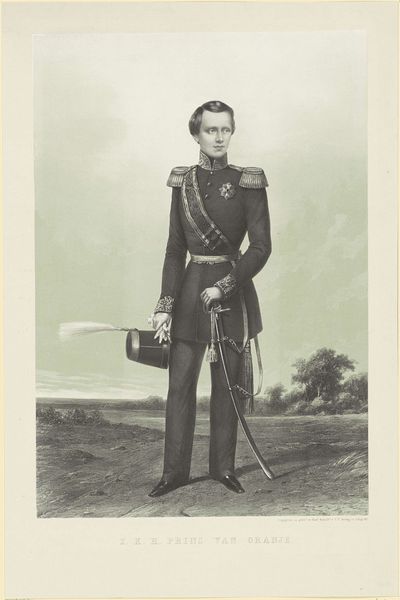
Dimensions: height 375 mm, width 273 mm
Copyright: Rijks Museum: Open Domain
Curator: This gelatin silver print, an anonymous portrait of Hendrik van Mecklenburg-Schwerin, was likely captured sometime between 1900 and 1910. What strikes you initially? Editor: There's a rigid formality to it, isn't there? Every detail feels carefully constructed, almost stage-managed, but what's particularly noticeable is the way all his decorations call attention to his chest, his heart almost disappears underneath it all. Curator: Indeed. Let's consider how that formality is conveyed. We see elements characteristic of academic art – controlled lighting and meticulous detail, a sort of studied Neoclassicism evident in the composition. What meaning do you derive from that rigidity? Editor: Well, portraits of this kind served very specific social functions. It's an image deeply entrenched in turn-of-the-century ideas about class and lineage. Note the accoutrements and decor: these were the tools by which class and privilege announced and reproduced themselves, and in the photograph's focus on Hendrik's royal regalia, you have an endorsement of all these mechanisms. Curator: Absolutely. And if we think about the material conditions of photography itself at this time, the relative accessibility of the medium enabled the proliferation of these types of images – cementing a shared understanding of how power presented itself. You see how this mode of communication further enshrined Hendrik as an almost mythological figure. Consider, too, the tonal range – limited and lending a somewhat ghostly air. Editor: Right, the photograph seems to invite veneration. The slight blur around the edges gives Hendrik an air of timelessness. What an uncanny way of seeing him so thoroughly adorned – we're seeing symbols of empire, the iconography of aristocratic Europe in all its finery! Curator: It provides a window into a very specific cultural moment. We can appreciate the portrait's visual structure, but also consider it as a document reflecting the complex social dynamics of the early 20th century. Editor: Exactly. It is about far more than what he literally wears; it tells of all that supported it and all who went without. It really puts things into perspective.
Comments
No comments
Be the first to comment and join the conversation on the ultimate creative platform.

